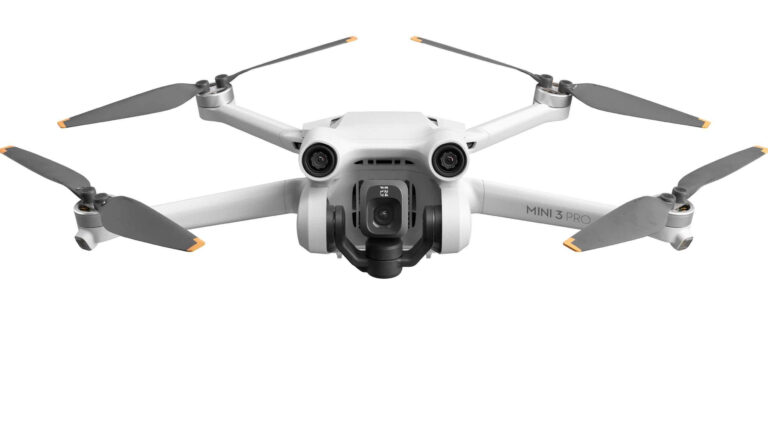Unleashing the Power of DJI Mini 3 Firmware, Remote ID, and Extended Batteries

In the ever-evolving world of drone technology, DJI has established itself as an industry leader, consistently pushing boundaries and redefining what is possible. The DJI Mini 3, Mini 3 Pro, and Mini 4 Pro drones have gained immense popularity due to their remarkable lightweight design, weighing under 250g. This weight advantage offers drone enthusiasts in the USA the added benefit of not requiring registration, which streamlines the process and ensures a hassle-free experience. However, DJI enthusiasts have recently encountered a dilemma, as the introduction of the “Intelligent Flight Battery Plus” (IFB Plus) brings about the challenge of adhering to the weight threshold. In this article, we will delve into the latest firmware updates, the implications of the Remote ID system, and the significance of extended batteries for DJI Mini 3 drone operators.
Understanding Firmware Updates for DJI Mini 3 Drones
As with any advanced technological device, firmware updates play a critical role in enhancing performance, improving functionality, and addressing known issues. DJI has worked diligently to keep its user base satisfied by regularly rolling out firmware updates. The latest iterations, namely the DJI RC-N1 firmware (v04.16.0500) and DJI RC firmware (v01.03.1200), are designed to provide users with enhanced control and a seamless flying experience. These updates introduce new features, bug fixes, and optimized performance that contribute to the overall reliability and stability of the drone. By ensuring that you are running the latest firmware versions, you can take full advantage of the capabilities offered by the DJI Mini 3, Mini 3 Pro, and Mini 4 Pro drones.
The Role of Remote ID: Compliance and Safety
To ensure the safe integration of drones in the airspace, regulatory bodies such as the Federal Aviation Administration (FAA) have implemented various measures, including the requirement for Remote ID. Remote ID is a system that mandates drones to share essential details about their identity via radio frequencies. This information is crucial for any nearby aircraft, enabling them to identify the drone and take any necessary action to maintain airspace safety. The DJI Mini 3’s firmware (v01.00.0410) allows operators to comply with the Remote ID standards set by the FAA, creating a safer environment for both manned and unmanned aircraft. The ability for enforcement agents to remotely access a drone’s specifications, known as AirSense or Automatic Dependent Surveillance – Broadcast (ADS-B), further strengthens the security framework, ensuring accountability and enabling swift action as needed.
The Intelligent Flight Battery Plus Conundrum
While the introduction of the IFB Plus provides extended flight time, it also poses a unique challenge for DJI Mini 3 operators, specifically in terms of weight compliance with the FAA regulations. Initially, some drone enthusiasts were upgrading their batteries without adjusting their settings to reflect the change in drone weight on their Remote ID. Notably, this issue was not prevalent for UK users, as the extended battery was not sold in the market. However, DJI recognized this potential oversight and addressed it in their DJI Mini 3 firmware update (v01.00.0410). The update now allows operators to accurately report the use of the IFB Plus, ensuring that the drone’s weight does not exceed the prescribed limit. By automatically preventing inadvertent rule violations, DJI Mini 3 users can rest assured that they are flying in compliance with the FAA regulations. Moreover, with the convenience of updated DJI Fly app (1.12.8), operators have seamless access to these compliance features, empowering them to fly responsibly without sacrificing the advantages provided by the IFB Plus.
The Evolution of DJI Mini 3: Unprecedented Updates
Continuing their tradition of excellence, DJI has implemented several noteworthy updates on the Mini 3 drones. While it initially stood out as one of the best drones for its value, these updates further solidify its position in the market. Alongside the firmware updates addressing weight compliance and Remote ID requirements, DJI Mini 3 users can now enjoy the option to shoot in 48 megapixels, expanding their creative possibilities and capturing stunning high-resolution images. This upgrade from the 12-megapixel binned mode truly sets the Mini 3 apart, allowing users to capture breathtaking details and immerse themselves in the world of aerial photography.
Conclusion: DJI Mini 3 – An Unparalleled Drone Experience
In conclusion, the DJI Mini 3 remains a top choice among drone enthusiasts, offering an unparalleled combination of value, performance, and compliance. With its lightweight design, the Mini 3 and its sibling models, Mini 3 Pro and Mini 4 Pro, alleviate the need for registration, streamlining the setup process for drone enthusiasts in the USA. The firmware updates, including the DJI RC-N1 firmware (v04.16.0500), DJI RC firmware (v01.03.1200), and DJI Mini 3 firmware (v01.00.0410), bring about enhanced control, stability, and optimized flight experience. Alongside these updates, the integration of the Remote ID system ensures a safer and more responsible flying environment, enabling easy identification and preventing inadvertent rule violations. Furthermore, the option to shoot in 48 megapixels elevates the Mini 3’s photography capabilities, providing users with the opportunity to capture stunning aerial images. Embrace the DJI Mini 3, and prepare to experience the world of drone photography like never before.
Note: The content provided here is intended as an informational resource and does not constitute legal advice. It is crucial to familiarize yourself with the regulations specific to your jurisdiction and always fly responsibly.
Subscribe to receive latest news from us

Other topics you may want to read:

DJI MAVIC 3 – Technical specifications
According to our researches, the brand new DJI Mavic 3 Pro will have the following features and technical specifications.
The drone will be equipped with:
Best drones with tracking mode option
The tracking mode option, or in other words “follow me” technology is one irreplaceable and really important feature that you should look for when buying a drone. Today we are going to share with you the best drones with tracking mode option, so you can make the best choice.

2 quick answers about Drone ND Filters
2 quick answers about Drone ND Filters Find out the usage of drone ND filters When and why use we Drone ND Filters In fact,
